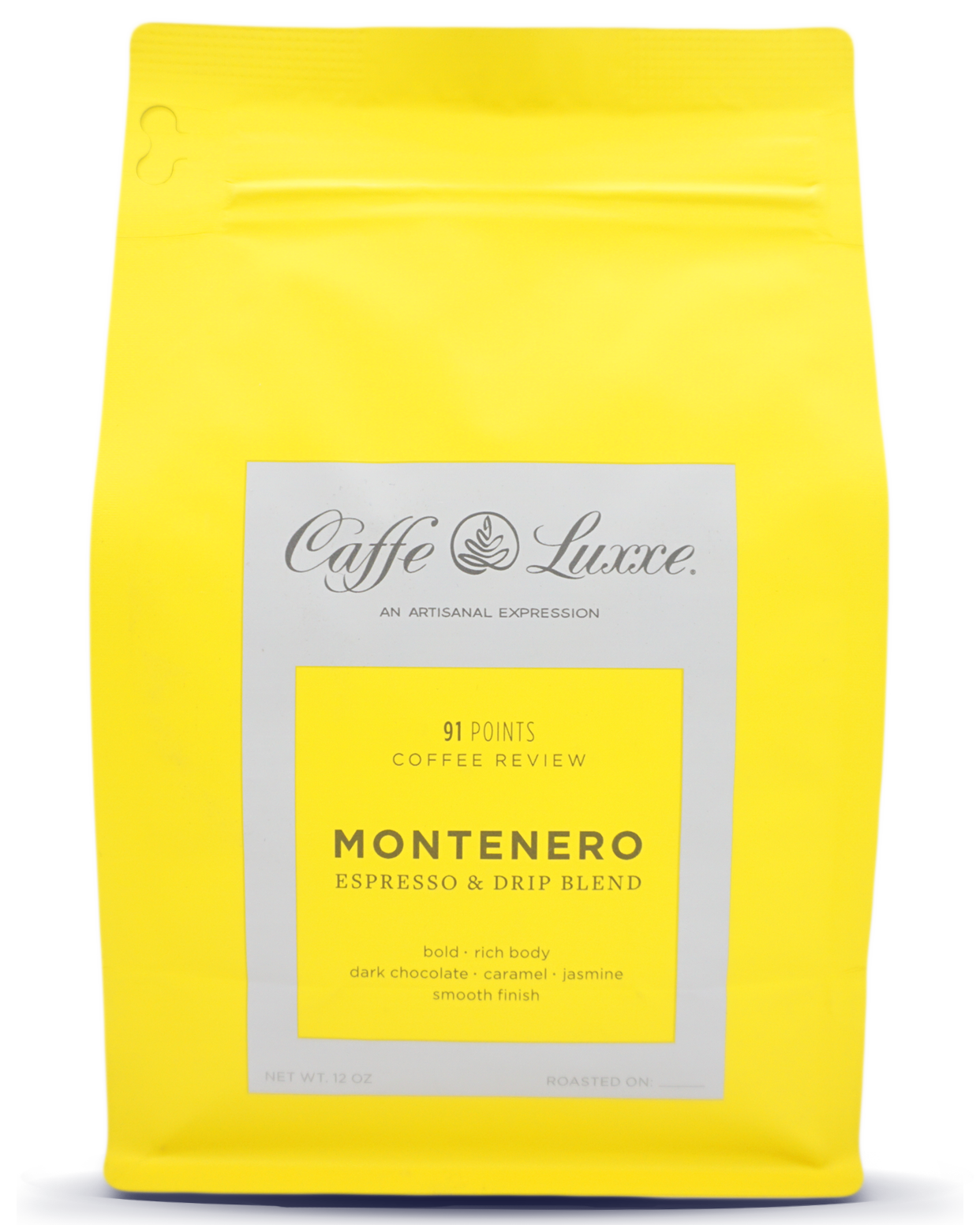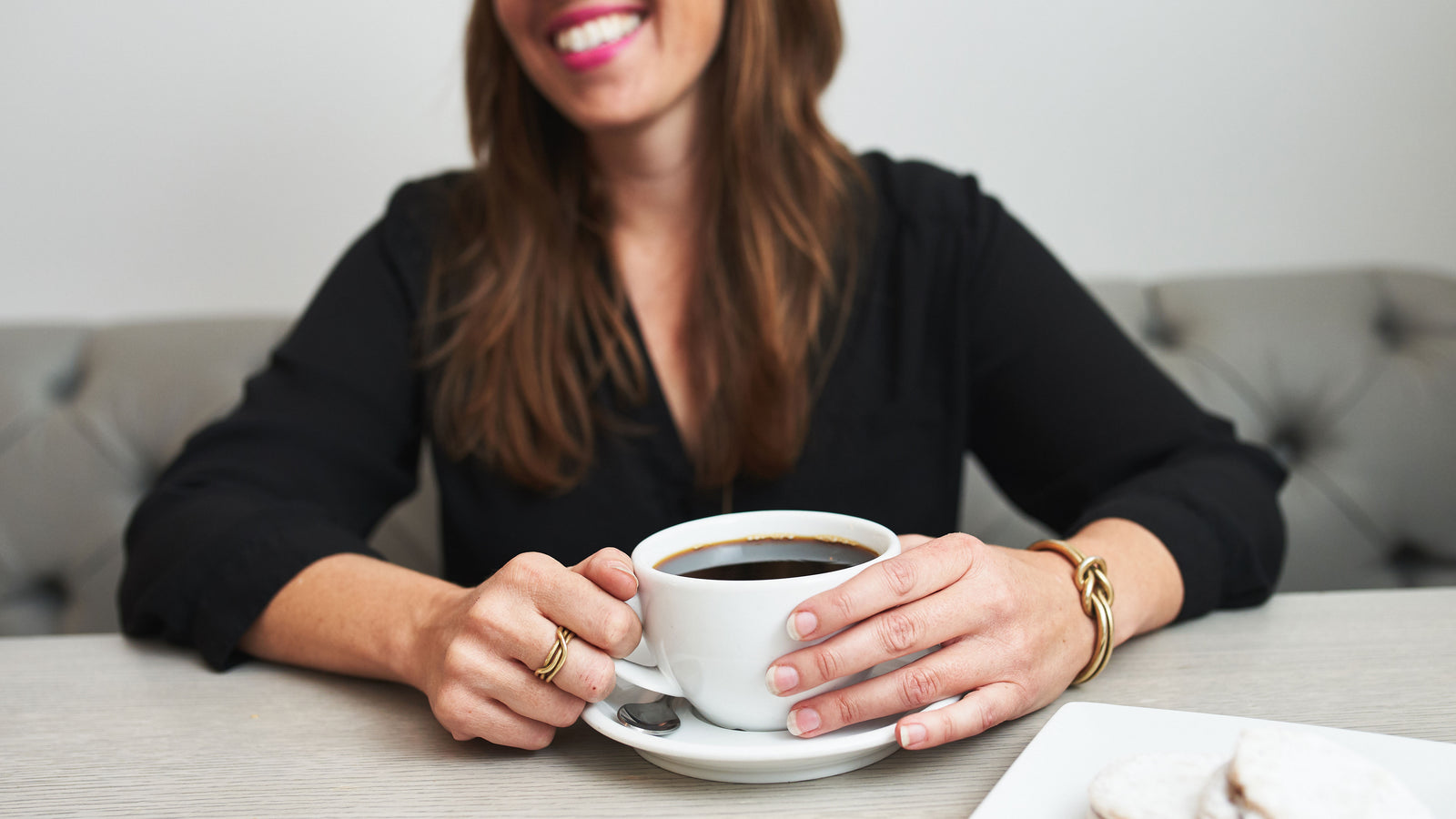
Brewing coffee at home doesn't need to be difficult, and with the right techniques your home brew can be just as delicious as the coffees served in our caffes. Follow these 11 simple tips, and you'll be on your way to improving your home brewed coffee!

1. Use Fresh, Whole Bean Coffee
A big part of what makes coffee smell and taste so complex and delicious is the presence of aromatic compounds in roasted coffee beans. Immediately after roasting, these compounds begin to escape from the bean in a process called degassing — taking a lot of flavor with them! After 8 days, up to 70% of those compounds will be gone. As time goes on, you lose more flavor, and are left with stale tasting coffee. Grinding coffee will make this process happen faster; exposing more surface area of the bean makes it easier for the compounds to escape.
Using only fresh coffee and grinding right before you brew will help ensure you get the most flavorful cup out of your beans! Consider a coffee subscription service to enjoy freshly roasted coffee delivered right to your door. In fact, all Caffe Luxxe coffees ship to you directly from our local roastery in Los Angeles!
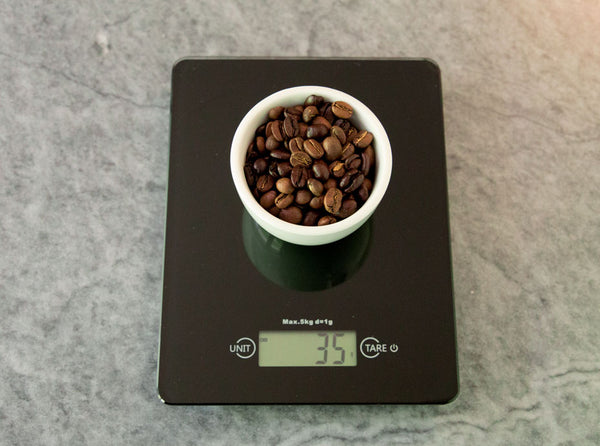
2. Use A Scale
Many of us have heard of the simple rule of using 2 tablespoons of coffee for every 6oz of water. And while that recipe (or similar recipes) can definitely be used to brew coffee, they lack the precision to take your brewing to the next level. Different coffees and blends can have a wide difference between been size and density, so a tablespoon of one coffee might actually weigh significantly less than a tablespoon of another coffee. Using a scale lets you measure by weight (instead of volume), which helps make sure that no matter what coffee you’re using, you know exactly how much of it is going into you cup.
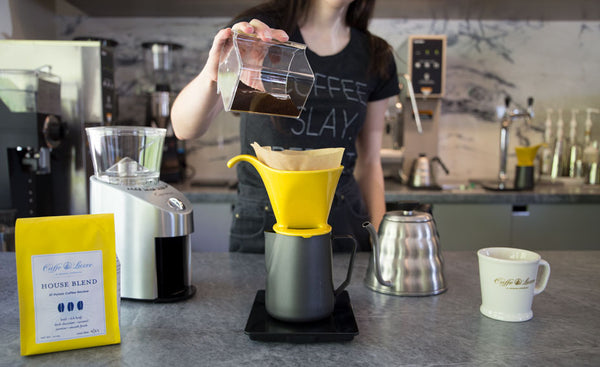
3. Use The Right Amount of Coffee
The amount of coffee you use in relation to the amount of water you brew with is what determines how strong or weak a cup of coffee will be. The more coffee you use, the stronger the cup; the less coffee you use, the weaker the cup.
So how do you know how much coffee to use? The best way to think about it is as a ratio between the amount of coffee used to the amount of water used.
For our House Blend, we use a ratio of about 1:12 (35 grams of coffee to 400 grams of water) to help accentuate its chocolate sweetness and silky body.
For our Single Origins, we recommend using a ratio of 1:14, which helps to highlight the more delicate flavors and acidity.
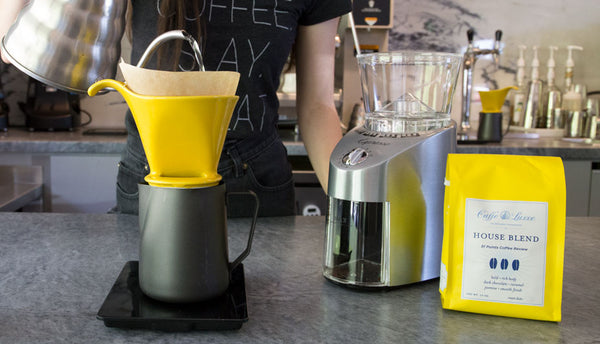
4. Use A Burr Grinder
A great grinder is one of the most important tools in brewing coffee. The particle size of ground coffee determines how quickly flavors are extracted from the beans, with smaller particles extracting faster than bigger particles.
When you brew coffee, you want all of your grounds to be about the same size, so all of the particles brew at the same rate. Being able to control the exact size of your ground coffee gives you a lot more control over the brewing process.
With burr grinders you can do exactly that; they make it incredibly easy for you to repeatedly produce a very specific grind size. One of our favorite grinders for home use is the Handground Precision Grinder; with 15 unique grind settings, this grinder let’s you consistently produce the perfect grind size for your brew.
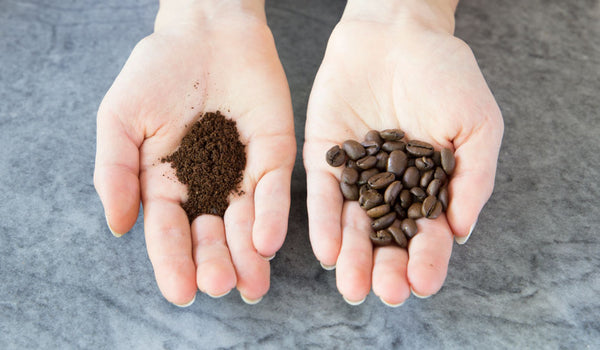
5. Grind At The Correct Coarseness (Or Fineness) Setting
Different brewing methods require different grind sizes to make great coffee. But how do you know if you’re using the right size? There are two really easy ways to tell: time, and taste. With our pour over recipes, we aim for the coffee to be brewed in about three and a half minutes. If the coffee brews too quickly, it means the grind was too coarse. If it brews too slowly, it means the grind was too fine. Additionally, if a coffee that tastes too acidic and sour it usually means the grind was too coarse, and if it tastes too bitter, it means the grind was too fine.
Generally speaking, espresso requires a fine grind, pour-overs and AeroPress require a medium grind, and French Presses require a coarse grind. Adjusting your grind setting to time and taste will bring you one step closer to delicious coffee at home. Check out our Brew Guides to learn more about the grind settings we use in our caffes!

6. Use Filtered Water
Did you know that about 98.5% of brewed coffee is just water? This means that the quality and taste of water plays a huge role in how your brewed coffee tastes. If the water you’re using tastes bad or has any strange odors, your coffee will too. Using purified water is one of the best things you can do for your morning cup. Tap water is usually pure enough to use for brewing; in many places, however, you may want to use water that has been through home filtration (like a Brita filter) or even bottled water.
A note on bottled water: make sure it's not distilled water. Yes, distilled water is technically the purest water. But it's a little too pure. Coffee actually needs some minerality and impurities to brew properly and taste delicious.
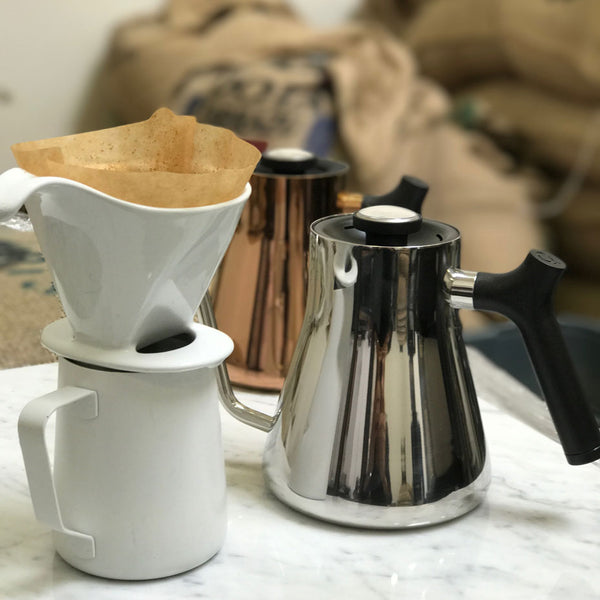
7. Make Sure Your Water is the Right Temperature
In order to extract the best flavors out of your coffee, the water you use to brew has to be at the optimal temperature: between 195 – 205 degrees F. While the temperature not only affects the speed of the extraction (cooler water brews coffee more slowly than hotter water), it also effects what gets extracted.
Much of the pleasant acidity and distinct flavors we love in our coffees wouldn’t show up in coffee brewed with water below 195 degrees F. Conversely, water above 205 degrees F will cause a lot more bitter flavors to extract from the coffee. Brewing in that sweet spot will bring out the sweetness and complexities of our coffees without extracting the unnecessary bitter flavors.
While a thermometer is ideal for checking temperature (the Fellow Stagg kettle even has one built in), water that is about 30 – 60 seconds off boil usually falls right within the desired range.

8. Pre-Heat / Pre-Wet Everything
Before you brew your coffee, make sure that anything your coffee is going to touch is as close to your brewing temperature as possible. If you don’t do this, your brewing device will steal heat from the water during the brewing process and significantly lower the temperature of the water. Knowing how crucial properly heated water is during your brew, you’ll definitely want to avoid needlessly lowering the temperature of your water.
Additionally, when brewing a pour over, make sure to prepare your filter by wetting it with hot water and letting it drain. Not only does this bring the filter to the correct temperature, it also washes away a lot of paper flavor that would otherwise wind up in your coffee.
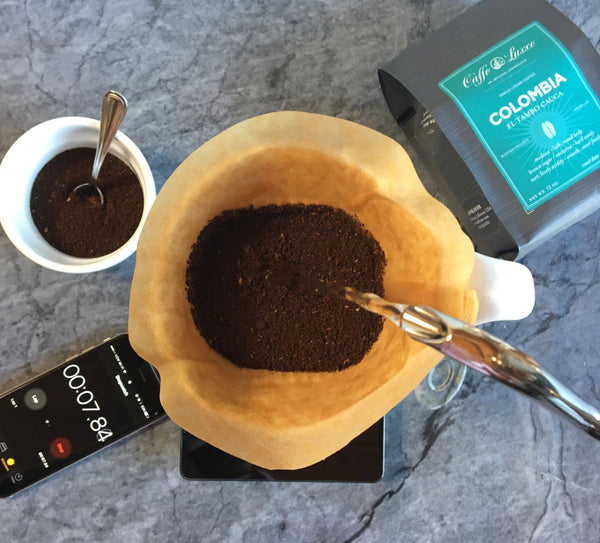
9. Bloom Your Coffee
Ever notice how your coffee grounds bubble up when you first pour hot water over them? That's called "the bloom." This phenomenon occurs when the hot water starts to dissolve the soluble compounds in the beans. This creates a build-up of pressure inside the coffee grounds and forcefully expels CO2.
You'll notice coffee "bloom" more when brewing freshly roasted coffee. Fresh coffee beans have a higher concentration of carbon dioxide gas – a natural byproduct of the roasting process.
The bloom is a vital step in the brewing process. It lets water fully saturate the coffee grounds for a more flavorful and aromatic cup of coffee. The presence of CO2 can negatively affect your brew by pushing water away from the ground coffee and preventing extraction. So you’ll want to add a small amount of water at the beginning of the brewing process, and wait about 30 seconds for the coffee to bloom before adding more water.
The amount of water used to bloom is usually double the amount of coffee you’ve used (ex. if you’re using 35 grams of coffee, you’ll want to use 70 grams of water for the bloom).
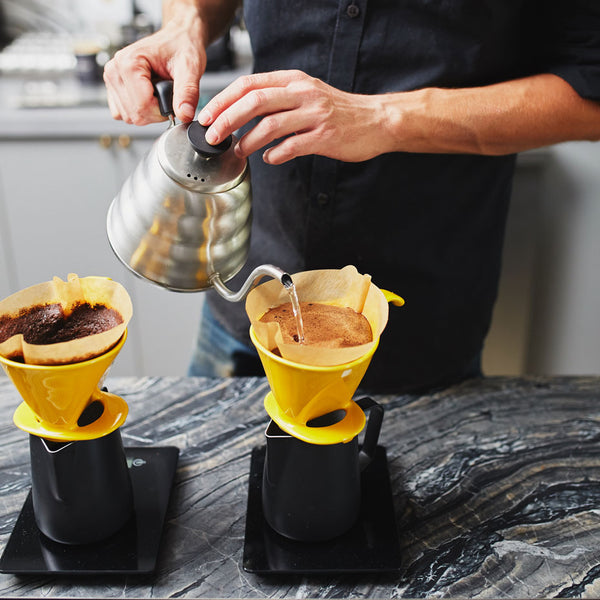
10. Fully Saturate Your Coffee
When brewing coffee, you want to make sure all of the ground coffee is in contact with water for the same amount of time. And while when you first add water to your pour over or French press, it may seem like the coffee is fully saturated, it’s not uncommon to find pockets of dry coffee. The best way to make sure all your coffee gets wet is to give your coffee a brief, light stir right after you add your water during the bloom phase.
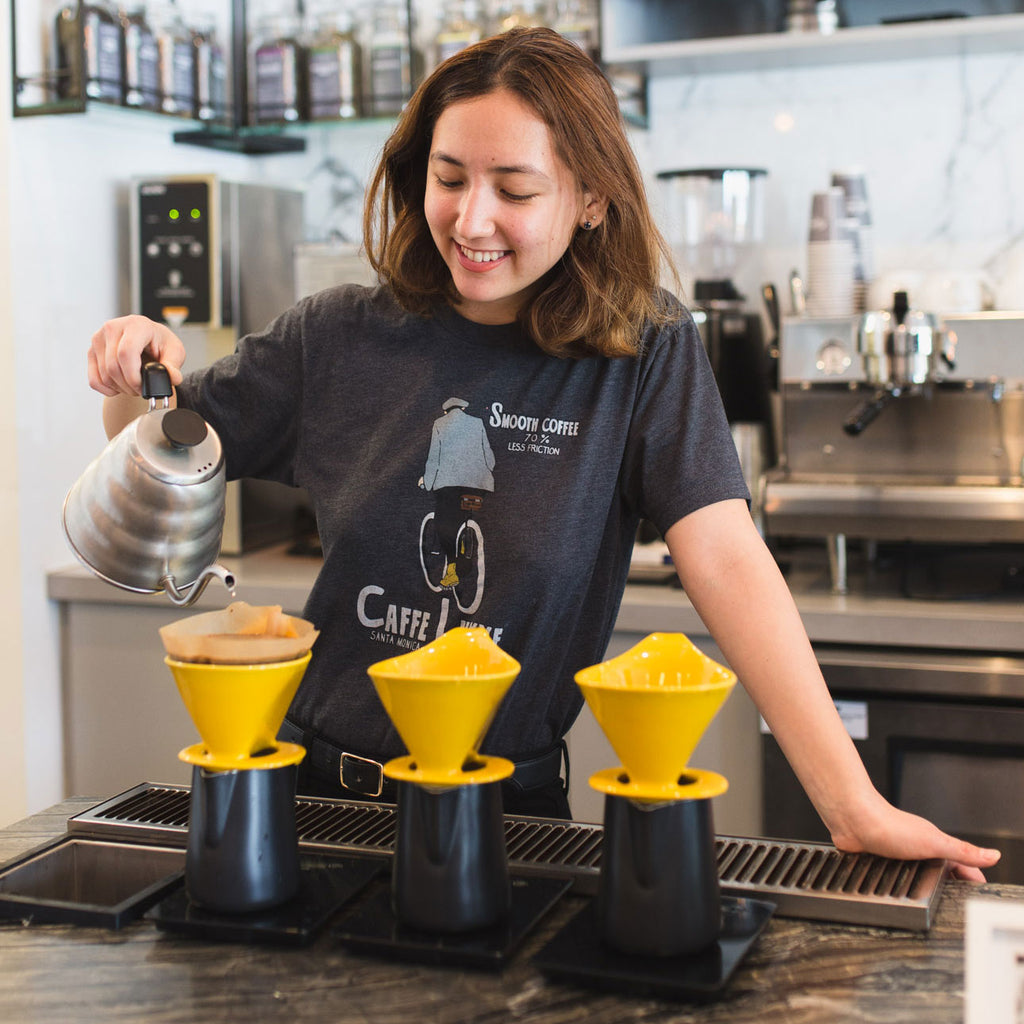
11. Experiment!
Part of the fun of brewing coffee is experimenting with different brewing methods and different coffees! You may regularly brew your coffee with a Bee House Dripper and love the taste, but have you tried brewing with an AeroPress or a French Press?
Maybe you’re a big fan our House Blend for its caramel and floral notes, but have you tried brewing one of our Single Origins and comparing the results? What about using a few extra grams of coffee for your morning cup and tasting the difference?
There are tons of ways to experiment with coffee. Each one will give you a little more insight into how you enjoy your coffee and how you can enjoy it even more.
